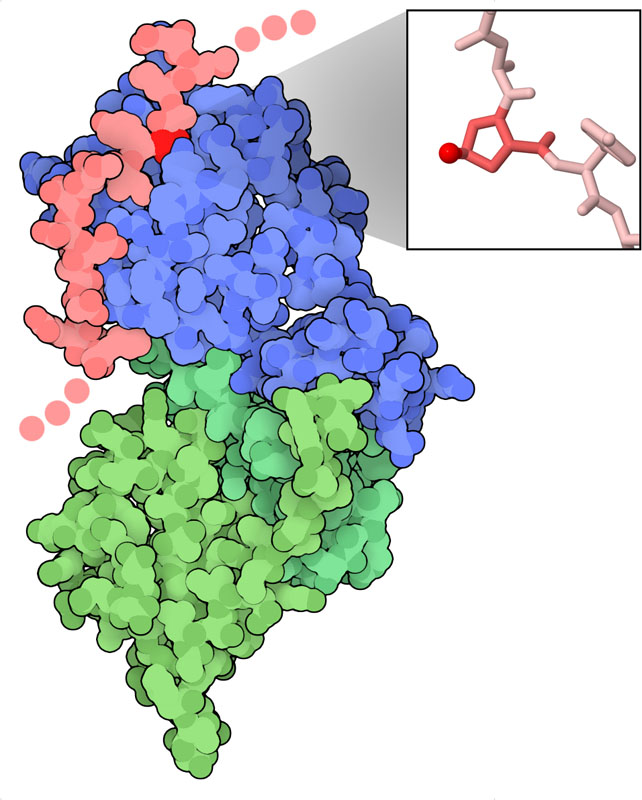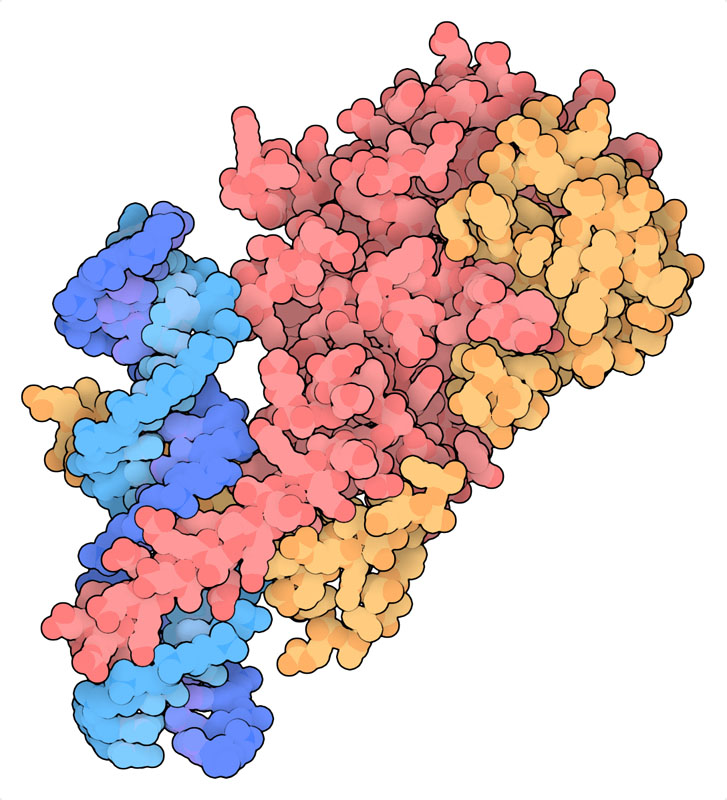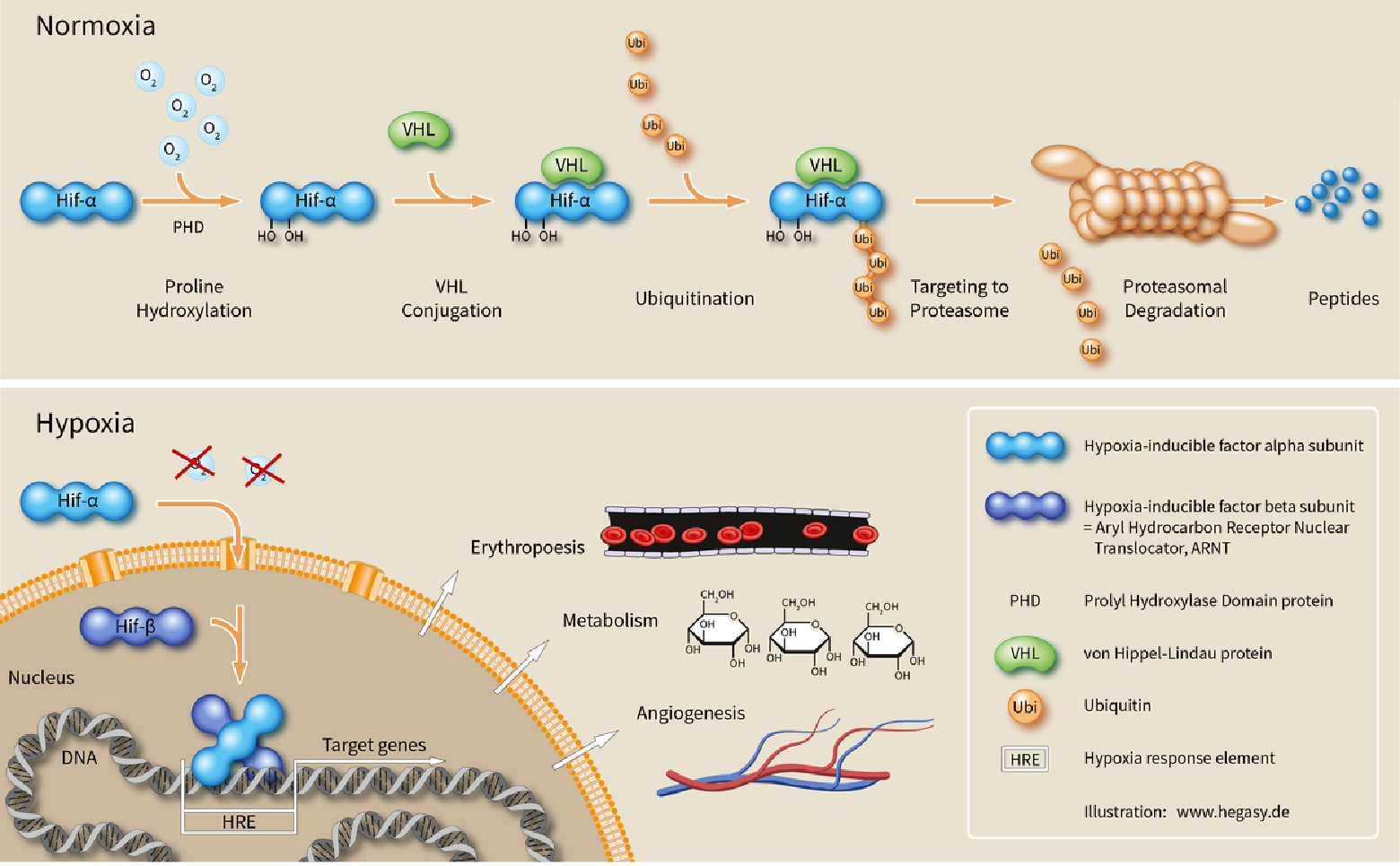Our cells are in permanent flux. Not only do they continually uptake energetic molecules and oxygen to generate energy, but even in the state of “rest” they are always busy with maintenance. Old proteins are constantly being broken down (in a specialised organelle called the proteasome) and to replace them new proteins are constantly being generated (in ribosomes). This equilibrium of production and elimination is often used by the cell to control its functions. This is also the case for sensing oxygen.
One of the key physiological response to hypoxia is the rise in levels of the hormone erythropoietin (EPO), which leads to increased production of erythropoiesis (red blood cells). Sir Peter Ratcliffe, FRS, FMedSci, also studied oxygen-dependent regulation of the EPO gene, and both research groups found that the oxygen sensing mechanism was present in virtually all tissues, not only in the kidney cells where EPO is normally produced. These were important findings showing that the mechanism was general and functional in many different cell types. [1]

To achieve sensitive oxygen sensing, cells constantly produce a specific protein called HIF-1ɑ. This protein contains in its structure a sensitive part, which under normal supply of oxygen reacts with oxygen molecules in a reaction called hydroxylation. Once hydroxylated, the surface of HIF-1ɑ has optimal shape to interact with another protein called VHL (Von Hippel-Lindau). After they meet and bind together a cascade of reactions is initiated which leads to attachment of several small ubiquitin proteins in a chain. This ubiquitin tail is a signal by which a cell marks proteins for degradation in proteasomes. Soon after this tail is attached, the protein is brought to the proteasome, disassembled into small pieces and effectively destroyed. That’s why HIF-1ɑ levels in a cell supplied with oxygen are low.

However, in situations where the cell lacks oxygen, hydroxylation reactions cannot happen, the amount of HIF-1ɑ quickly goes up and the protein can perform its function. HIF-1ɑ then pairs with another protein HIF-1ꞵ and enters the nucleus of the cell. Here it finds and activates many genes which help the cell and the organism to re-establish normal oxygen levels. The main functions of HIF activated genes are generation of new blood cells (erythropoiesis), changes in cell metabolism and growth of new blood vessels (angiogenesis).
